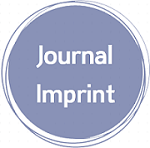Isolation of Lasiodiplodin and Evaluation of some Biological Activities of the Stem Barks of Phyllanthus Albizzioides (Kurz) Hook.f.
Downloads
A large number of the plants are claimed to possess the antibiotic properties in the traditional system and are also used extensively by the tribal people throughout the world. It is now mostly thought that nature has given the cure of every disease in one form or another. Plants have been known to cure people from various diseases in Ayurveda. This research focused on the screening of phytochemicals and some biological activities of Phyllanthus albizzioides. The research showed that the ethanol extracts were found to be greater chemical constituents than watery extracts. Among the chemical constituents, steroid compounds were observed in highest amount in ethanol extract and the second highest in flavonoid compounds followed by tannin compounds and pheolic compounds. Furthermore, the ethanol extracts were more effective than the watery extracts in all tested biological activities such as antioxidant, anti-diabetic, cytotoxicity, antimicrobial, antitumor and NO inhibition activities. A cyclohexanone compound was isolated from the chloroform extract of the stem bark of P. albizzioides. The relative structure was determined to be 4,5-dihydroxy-3-methyl-cyclohex-2-enone on the basic of HRESIMS, 1H NMR and 13C NMR spectroscopic analyses, including 2D NMR experiments.
Downloads
Thomas, E., Vandebroek, I., Sanca, S. & Van Damme, P. (2009).Cultural significance of medicinal plant families and species among Quechua farmers in Apillapampa, Bolivia, J. Ethnopharmacol, 122(1), 60-67. doi: 10.1016/j.jep.2008.11.021.
Harborne, J. B. (1984). The Organic Constituents of Higher Plant: Their Chemistry and Interrelationships. 4th Ed., Cordus Press, North Amherst, 58.
Salim, A. A., Chin, Y. W. & Kihhorn, A. D. (2008). Drug Discovery from Plants. Bioactive Molecules and Medicinal Plants, 978-3-540-74603-4-1, ©Springer, 1-25
Mukerjee, P. K., Saritha, G. S. & Suresh, B. (2002). Antimicrobial potential of two different Hypericum species available in India. Phytotherapy Research, 16(7), 692-695. https://doi.org/10.1002/ptr.1016.
Ghani, A. (1998). Medicinal Plants of Bangladesh. 1st Ed., Asiatic Society of Bangladesh, Dhaka., 9-11.
Trease, G. E. & Evans. W. C. (1980). Pharmacognosy. London: Spottis Woode Ballantyne, 622. https://doi.org/10.1002/jps.2600690550.
Robinson, T. (1983).The Organic Constituents of Higher Plants: Their Chemistry and Interrelationships. North America: 5th Ed., Cordus Press, 63-68.
M-Tin Wa. (1970). Phytochemical Screening Methods and Procedure. Phytochemical Bulletin of Botanical Society of America Inc., 5(3), 4-10.
Vogel, A. I. (1966). A Text Book of Practical Organic Chemistry. London: 3rd Ed., English Language Book and Longman Group Ltd., 453.
Finar, I. L. (1909).Organic Chemistry.London:Longmans Greens and Co. Ltd., III. 304-305.
Marini-Bettolo, G. B., Nicole, H. M. & Palamia. M. (1981). Plant Screening by Chemical and Chromatographic Procedure under Field Conditions. J. Chromatog., 213, 121 – 123.
Zak, B., Dickenman, R. C., White, E. G., Burnett, H. & Cherney, P. J. (1981). Rapid estimation of free and total cholesterol. Life Sciences, 24(18):16.
Basma, A. A., Zakaria, Z., Latha, L. Y. & Sasidharan, S. (2011). Antioxidant Activity and Phytochemical Screening of the Method Extracts of Euphorbia hirta L. Asia Pacific Journal of Tropical Medicine, 8 (8), 386 – 390.
Broadhurst, R. B. & Jones, W. T. (1978). Analysis of Condensed Tannins Using Acidified Vanillin. J. Sci. Food Agr.,29, 788-794.
Hedge, J. E. & Hofreiter, B. T. (1962). Methods in Carbohydrate Chemistry. (Eds.,) Whistler, R. L. and BeMiller, J. N., New York: Academic Press, 17, 420.
A.O.A.C. (2000).Official and Tentative Methods of Analysis, Association of Official Analytical Chemists, USA: 17th Ed., Gaithersburg, Maryland, AOAC International, 63-67.
Kaur, S. & Poonam, M. (2014). Study of Total Phenolic and Flavonoid Content, Antioxidant Activity and Antimicrobial Properties of Medicinal Plants. Journal of Microbiology and Experimentation, 1(1), 1-6.
Kwon, Y. I., Vattem, D.V. & Shetty, K. (2006). Evaluation of clonal herbs of Lamiaceae species for management of diabetes and hypertension. Asia Pac. J. Clin. Nutr.15, 107–118.
McCue, P., Kwon, Y. I. & Shetty, K. (2005). Anti-amylase, anti-glucosidase and anti angiotensin I converting enzyme potential of selected foods, J Food Biochem. 29, 278–294.
Dockery, M. & Tomkins, S. (2000). Brine Shrimp Ecology. 1st Ed., The British Ecology Society, London, 92-93.
Cruick, R. (1975). Medicinal Microbiology. London: 11th Ed, E & S Living Stone, 234 – 241.
Coker, P. S., Radecke, J. Guy, C. & Camper, N. D. (2005). Potato Disc Tumor Induction Assay: A Multiple Mode of Drug Action Assay. J of Phytomedicine, 10, 133-138.
Jin, S. E.; Son, Y. K.; Min, B. S.; Jung, H. A. & Choi, J. S. (2012). Anti-inflammatory and Antioxidant Activities of Constituents Isolated from Pueraria lobata Roots, Arch. Pharm. Res. 35, 823837. DOI 10.1007/s12272-012-0508-x.
Schmidt, H. & Kelm, M. (1996). Determination of nitrite and nitrate by the Griess reaction. In: Feelisch, M.; Stamler, J.; Eds, Methods in Nitric Oxide Research. John Wiley & Sons, Chichester (UK), 491-497.
- This work (including HTML and PDF Files) is licensed under a Creative Commons Attribution 4.0 International License.












